Total de sólidos dissolvidos
What should the Total de sólidos dissolvidos TDS) of your media be?
- Uma análise de água irá fornecer-lhe o TDS correto Então você pode encomendar a mídia correta.
- Do not base your media on Só the chloride or Só the salinity levels detected in your water analysis. TDS is composed of every solid existing in the water sample.
- O TDS de nossa mídia deve corresponder ao TDS de sua amostra de água.
TDS vs Salinity
TDS (total dissolved solids) is a standardized term that refers to any salt, mineral, metal, ion, inorganic and organic matter that can be dissolved in water and is found in natural and man-made systems or environments. The most common inorganic salts found are the ones formed by calcium, magnesium, potassium, sodium, bicarbonates, sulfates, and chlorides. So, in general, TDS is the sum of the ions, positive and negative, found in water.
On the other hand, salinity can be an ambiguous term. In theory, salinity refers to the total concentration con all dissolved salts in water. However, in some industries the term could only apply to chlorides given that sodium chloride, (common table salt), is the most common and predominant source of ions found in water. For example, in fresh and clean water, TDS and salinity will have similar low numbers; however, in wastewater TDS can also include organic matter so its concentration will be much higher than the one gotten from a salinity analysis. TDS is commonly expressed in parts per million (PPM) or milligrams per liter (mg/L). Salinity is commonly expressed in parts per thousand (PPT), or grams per liter (g/L). TDS is a term used mostly in the oil and gas industry, mining, and water treatment while salinity is more predominant in agriculture, hydroponics and environmental safety and regulations.
There is another term that could create some conflict or confusion and that is conductivity. Conductivity is a measure of water’s capacity to pass electrical flow and it is directly related to the concentration of ions in the water. So, testing for conductivity is a good way of approximating salinity, but it might not be too accurate for TDS, since certain organic compounds won’t be good electrical conductors. Conductivity is commonly measured in microsiemens per centimeter (uS/cm) or siemens per meter (S/m).
Biotechnology Solutions TX offers both options when it comes to customize any of our media. Our standardized percentages are in TDS since we include most elements that could be found in a water sample obtained from a system, field, or environment. However, if you would like to have your media being customized by salinity we have no problem in doing it so, just keep in mind that the numbers should be lower than the TDS category. Also, make sure to specify if your use of “salinity” refers to only chlorides (common salt) or if it involves all ions dissolved in your sample (chlorides, sulfates, phosphates, among others).
Any percentage of TDS can be manufactured as long as it is below the saturation point of salts in water which can go from 26% at room temperature to 28% at boiling temperature. Even though almost any percentage can be manufacture it is important to remember that bacteria can tolerate certain ranges of salinity and maintain a normal growth rate. For example, if you have SRB that live in a 7% TDS, they can maintain a normal growth rate from 6.5% to 8.5%.
Nós personalizaremos contente todos os meios para combinar sua amostra da água para nenhum custo adicional.
Por favor, verifique este gráfico para os níveis de TDS que mantemos em estoque em todos os momentos:

